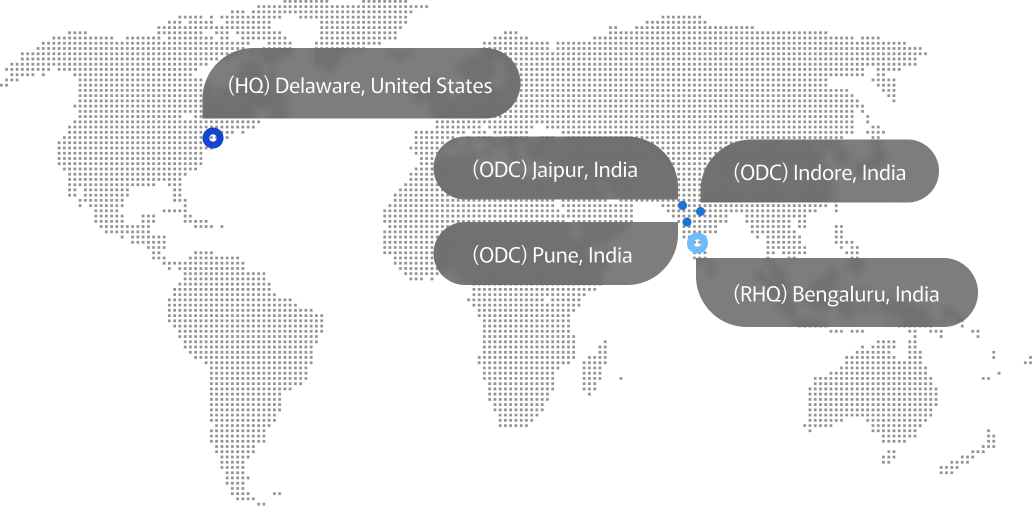
Mulesoft Integration Scenarios – Use Cases and Examples
MuleSoft Integration is fundamental for businesses looking to streamline processes, enhance decision-making, and create seamless data flows across systems. Advayan provides MuleSoft Integration services to facilitate critical scenarios that support both fundamental and complex use cases, demonstrating how effective data integration powers business operations. By incorporating diverse data flows—ranging from real-time streaming to end-to-end workflows—MuleSoft Integration solutions offer unique opportunities to gain insights, improve efficiency, and enhance decision-making. This guide explores various scenarios with practical examples to showcase the value of the MuleSoft Anypoint platform.
1. Data Aggregation with MuleSoft Integration
Data aggregation is essential in MuleSoft Integration, allowing businesses to gather data from multiple sources to ensure completeness and enhance understanding. Through the MuleSoft Integration platform, data from various applications can be centralized into repositories like data lakes or warehouses, enabling comprehensive analysis and data-driven decision-making. This scenario is foundational for creating dashboards, reports, and other analytics tools.
Example Use Cases:
- Customer 360 View: Using MuleSoft Integration to aggregate customer data from CRM, service applications, and purchasing history to create a unified customer profile.
- On-Premises to Cloud Migration: Transitioning data from legacy on-premises applications to a cloud-based data warehouse using the MuleSoft Anypoint platform, enabling scalability and advanced analytics.
- ERP and IoT Integration: Merging ERP and sensor data through MuleSoft Integration services to analyze machine usage patterns and optimize predictive maintenance.
- Executive Sales Dashboards: Consolidating sales data from multiple sources into a single dashboard, delivering real-time insights for decision-makers.
2. Streaming Data with MuleSoft Integration Services
With IoT devices and real-time digital interactions on the rise, MuleSoft Integration enables businesses to leverage live data streams for operational insights. The MuleSoft Anypoint platform collects and processes data from connected devices in real-time, allowing businesses to act swiftly and make informed decisions based on the latest data.
Example Use Cases:
- IoT Sensor Monitoring: Using MuleSoft Integration solutions to process real-time sensor data from equipment, enabling tracking of performance and status at edge locations.
- Inventory Synchronization: Real-time updates of inventory data across multiple store locations, facilitated by the MuleSoft Integration platform to improve stock management.
- User Activity Tracking: Consolidating website clickstream data for customer behavior analysis through MuleSoft Integration, enhancing user experience.
- Predictive Maintenance: Monitoring machine vibration data to predict and prevent failures, utilizing the MuleSoft Anypoint platform’s capabilities for real-time analysis.
3. Data Synchronization Across Applications
For organizations requiring data consistency across multiple systems, MuleSoft Integration provides practical solutions for synchronizing information. This scenario ensures that records are consistent across platforms like ERP, CRM, and financial systems, enabling real-time updates and accurate information transfer. MuleSoft Integration solutions streamline this synchronization, reducing redundancies and improving data accuracy.
Example Use Cases:
- Account Synchronization: Using MuleSoft Integration to automatically sync customer data between ERP, CRM, and financial systems whenever accounts are created or updated, ensuring data consistency across applications.
- Customer Support Synchronization: Keeping customer data current across support applications, allowing for personalized, efficient customer service with MuleSoft Integration solutions.
4. Data Sharing with External Partners
MuleSoft Integration services facilitate data sharing with external partners, such as suppliers, contractors, and regulatory agencies, enabling coordinated operations and compliance. MuleSoft’s Anypoint platform supports seamless, secure data exchange to keep businesses aligned with partner organizations and regulatory requirements.
Example Use Cases:
- Purchase Order Exchange: Sharing purchase orders with suppliers for efficient order fulfillment, enabled by the MuleSoft Integration platform.
- Invoice Sharing for Payment: Transferring invoices to suppliers for payment reconciliation using the MuleSoft Anypoint platform’s data-sharing features.
- Tax Data Transfer: Sending tax data to government agencies, streamlining compliance and reporting through MuleSoft Integration.
- Machine Data for Compliance: Sending machine operation data to regulatory bodies for safety compliance through MuleSoft Integration services.
5. Event Broadcasting in Real-Time
Event broadcasting in organizations helps communicate significant updates, such as order statuses, equipment maintenance, or system alerts. MuleSoft Integration enables event-driven data flows that automatically notify relevant systems and users, supporting prompt responses and ongoing process management.
Example Use Cases:
- Shipment Tracking: Updating customers with real-time consignment status through MuleSoft Integration.
- Order Fulfillment Notifications: Notifying customers of order progress via MuleSoft Integration solutions, enhancing customer experience.
- Inventory Alerts: Broadcasting inventory status across applications to improve stock management.
- Website Traffic Alerts: Sending alerts to IT teams when website traffic surges, helping to prevent downtime.
6. Bulk or Batch Data Movement
For data processes that don’t require real-time updates, MuleSoft Integration supports bulk or batch data transfers, allowing businesses to move large data volumes during off-peak hours. This approach conserves resources and improves data management efficiency, especially for scenarios involving data migration or routine updates.
Example Use Cases:
- CRM Data Migration: Transferring customer data from a legacy CRM to a modern system like Salesforce using MuleSoft Integration services.
- Scheduled Invoice Transfers: Periodically transfer invoices from an ERP to payment systems using the MuleSoft Anypoint platform.
- Financial Reconciliation: Aggregating data from multiple applications for daily financial reconciliation through MuleSoft Integration solutions.
- Shipping and Receiving Summaries: Summarizing daily shipping and receiving data for operational insights facilitated by MuleSoft Integration.
7. Synchronized Data Transfers or Process Triggers
In specific MuleSoft Integration scenarios, synchronous data transfers occur where the receiving system initiates a data request and awaits a response from the sending system before continuing its own processes. This approach is essential for applications with strict dependencies on timely data reception, ensuring that operations at the receiving end are accurately informed by up-to-date data.
Example Use Cases:
- Sales Report Retrieval: Using MuleSoft Integration to receive last year’s sales data from a CRM system in real-time for reporting or analysis.
- Invoice Lookup: Accessing specific customer invoices within an ERP system, ensuring accuracy for accounting or support tasks.
- Prepaid Balance Check: Facilitating real-time prepaid balance checks for mobile services using MuleSoft Integration solutions.
- Prescription Verification: Checking a patient’s prescription record before searching for available medications in pharmacy systems, improving service efficiency.
8. Asynchronous (Fire-and-Forget) Data Transfers or Process Triggers
In asynchronous data transfer scenarios, or “fire-and-forget” processes, data is sent without requiring confirmation from the receiving system. This approach, enabled by the MuleSoft Anypoint platform, allows the sending application to proceed immediately after sending data, optimizing workflows where real-time acknowledgments are unnecessary.
Example Use Cases:
- Promotional Campaigns: Sending bulk promotional emails or SMS messages to potential customers using MuleSoft Integration without waiting for delivery confirmation.
- Expense Approval Workflow: Automatically triggering an expense approval process without waiting for system acknowledgment, streamlining approval procedures.
- Insurance Claim Processing: Submitting claim receipts to insurance systems, where asynchronous handling frees up resources for faster claim processing.
9. Orchestration and Data Processing
Orchestration through MuleSoft Integration brings together data from multiple sources, creating a unified, context-rich layer between target and source systems. This abstraction allows for complex business logic and domain-specific integrations, making orchestration a powerful tool for processes requiring comprehensive data clarity and control.
Example Use Cases:
- Customer Account Activation: Activating a customer account by combining background verification, credit checks, and account validation processes within a single workflow.
- Employee Onboarding: Orchestrating tasks such as IT asset delivery, salary account setup, and workstation assignment, simplifying the onboarding process for new hires.
10. Delivering End-to-End Business Processes
The above integration scenarios in MuleSoft Integration are not exclusive but complement each other as building blocks for complex, end-to-end business solutions. Combining multiple MuleSoft Integration solutions allows organizations to develop fully integrated workflows, connecting processes across departments and systems for streamlined operations.
Example Use Cases:
- Automated Purchase Order Workflow: Streamlining the purchase order process from management approval to supplier notification and fulfillment, reducing manual effort.
- Customer Record Enrichment: Integrating CRM and marketing data to create tailored marketing strategies for specific customer profiles, enhancing engagement and conversion rates.
Conclusion
MuleSoft Integration, supported by the MuleSoft Anypoint platform, enables organizations to achieve seamless, end-to-end data integration across systems. Advayan’s MuleSoft Integration services are designed to provide robust solutions for businesses, empowering them with reliable, real-time data access and streamlined operations across various domains. With APIs and comprehensive integration capabilities, the MuleSoft Anypoint platform stands out as a leader in lifecycle management, offering businesses powerful tools to meet and exceed integration demands.





